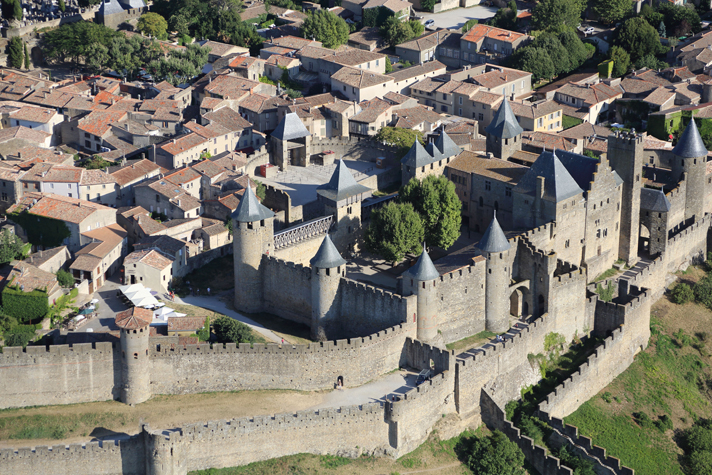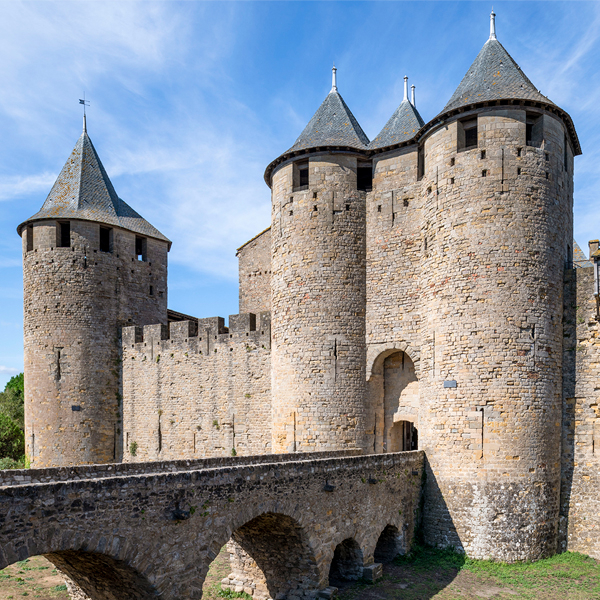A must-see
article | Reading time5 min
A must-see
article | Reading time5 min
The double walls of Carcassonne are one of the key features of the fortress. Climb the ramparts and enjoy a unique panorama of the Pyrenees and the Aude.
Between the 3rd and 5th centuries, Carcassonne was attacked by Visigoths, Saracens and Franks. As a result, the city was equipped with a Gallo-Roman enclosure, featuring horseshoe-shaped towers and wide bays. Later, in the 13th century, it was once again besieged during the crusade against the Albigensians (1209). It became a royal city in 1226, and was fortified with a 1,600-meter-long outer rampart. This was characterized by a wide, rusticated structure, making the support of assault ladders unstable. Now considered impregnable, Carcassonne was a strategic stronghold in the conflict between the French and Aragonese kingdoms.
Tensions between the two countries eased in 1659, with the signing of the Treaty of the Pyrenees. The fortress lost its military vocation and eventually fell into ruin. In the 19th century, the architect Eugène Viollet-le-Duc undertook its restoration. Enclosures, towers and barbicans were restored to their former splendor!
In 1908, an orientation table was installed at the top of the Tour-Porte Saint-Nazaire, on the inner wall. Let's take a look around: Carcassonne's ramparts offer a breathtaking view of the Pyrenees!
Laurent Gueneau / Centre des monuments nationaux
It's to the north that the Gallo-Roman walls have been best preserved over the centuries. The Marquière and Vieulas towers bear witness to this! From the chemin de ronde, enjoy a panoramic view stretching from the rolling Carcassès plain to the Montagne Noire. To the east, you can also contemplate the slopes of the vineyards.
© Laurent Gueneau / Centre des monuments nationaux
We now turn west, towards the Tour de l'Évêque. From here, you can admire the castle and the Basilica of Saint-Nazaire. Beyond, the lower town stretches along the left bank of the Aude. This is where you'll find the bastide Saint-Louis, with its covered market and Saint-Michel cathedral. Finally, look to the horizon: you're facing the Corbières, and further on, the Pyrenees!
Now, what would you say to seeing the city with your own eyes?
© 4vents



